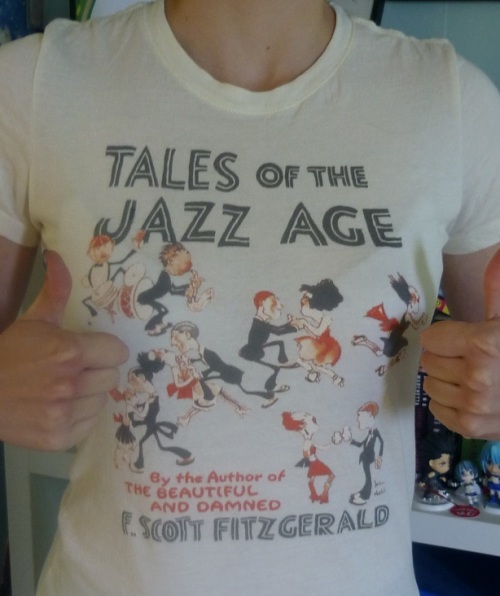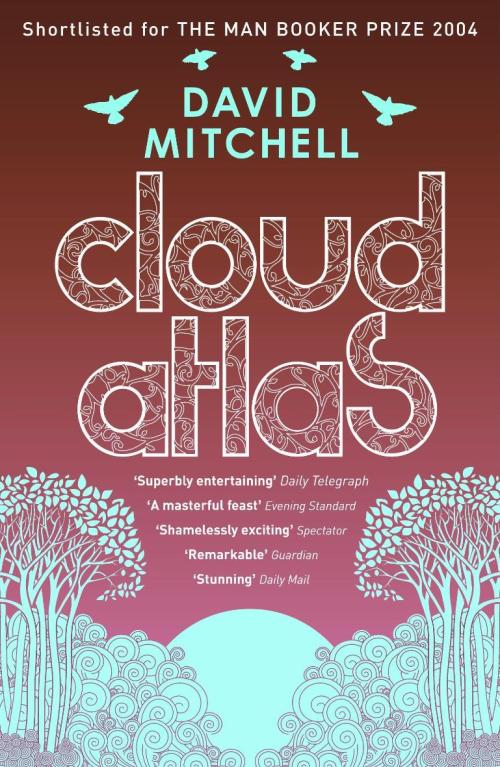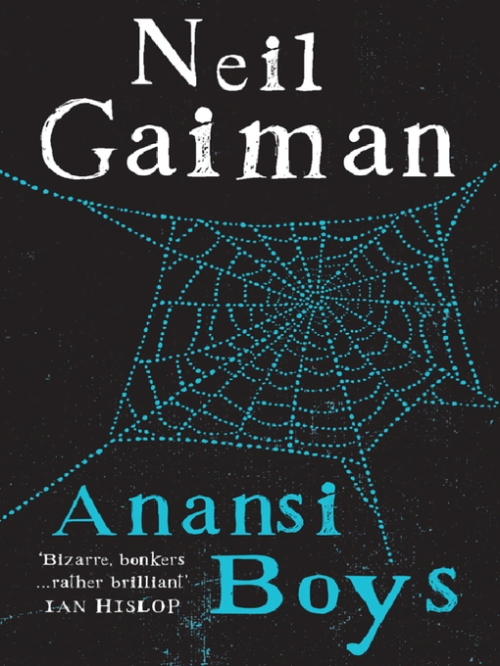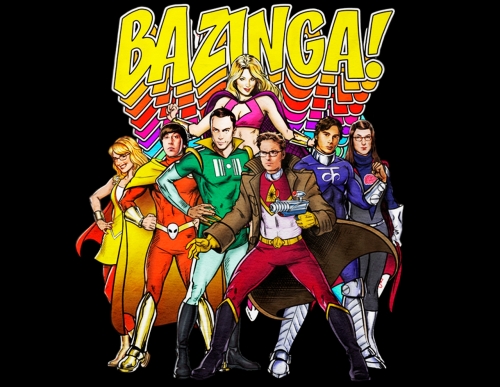I did not read nearly as much as I meant to this year… perhaps it was laziness, the illusion of being busy, or the fact that the books I did read were on average bigger or tougher to get through. Who knows? I wish you all a very happy New Year, and leave you with my thoughts on the reading list for 2013.
1. A Clash of Kings by George R. R. Martin (1998)
My A Song of Ice and Fire conquest continues, and I’m afraid the campaign hit a bit of a slow trudge. The world of Westeros is as wonderful and horrifying as ever, but at times I was questioning the need for endless introductions of orbital pledged Houses. It’s all important, of course, but I’m afraid I turned these pages with the jaded mind of a television viewer noting that they’d ‘fixed up’ the pacing and overpopulation issues for the show.
2. Tales of the Jazz Age by F. Scott Fitzgerald (1922)
A fun collection of short stories detailing various characters and caricatures from the world Fitzgerald loves to poke at with his lovely rich prose. Oh, and I totally bought that t-shirt.

3. A Storm of Swords by George R. R. Martin (2000)
Probably my favourite of the ASOIAF books (so far. I resolved to let myself hang a bit after the power of number three, since into four and five the formula and style changes and, of course, if I finish them I’ll be left waiting for the next one, and we all know how terrible that is)—it was consistently paced, vividly set-up and full of fantastically knotted plot twists and character mischief. A lot of things happen, a lot of it is terrible, but I was rapt the entire time. From a worldbuilding perspective, it was really nice to see lots of Westerosi weddings. Everyone had a great time.
4. Every Day by David Levithan (2012)
I need to pay more attention to David Levithan, because he is a master at work in his own world—not only did this book have a really cool and imaginative concept (the protagonist wakes up in a different body every day, and gets by temporarily borrowing other people’s lives) but he’s done a lot of excellent things that we ought to see more of in YA. He examines the contrasts and endless differences between individuals and their lives, families, backgrounds, personalities, orientations, goals, habits… and looks at how they all coexist and interconnect, which is a theme I adore. His cast of borrowed lives is not only amazingly diverse (like, you know, real populations) but, as well as being inclusive of several different kinds, he’s managed to pull off having a protagonist that is tied down by nothing that would usually define a character: no gender, no race, no social status, no family background. The attempt at conflict was a bit weak, but that isn’t what you read it for.
I have a lot to say about this book.
5. Tales of a Female Nomad by Rita Golden Gelman (2002)
I thought this was appropriate to look into given my own travelling plans for this year. The autobiographical author’s adventures were certainly interesting, but I found I simply couldn’t connect with her when she accepted a terrifying skin disease as a symbolic ‘shedding’ of her old self and her old life during her first trip to South America where she fell in love with the world wanderer’s lifestyle. That’s all very well, but I’d sooner get my butt back home to a doctor. Then again, I’d also miss out on a lot of mystifying and crazy experiences, which she writes about with a lovely voice.
6. Rowan of Rin by Emily Rodda (1993)
Writing Buddy couldn’t believe I hadn’t read this riddle-filled fantasy quest (a staple of our childhood, surely! I was busy with Deltora Quest) so I picked it up and breezed through it. Written very simply (which apparently picks up in later books) but doesn’t necessarily talk down to the kids it’s aimed at. Its sense of innocent, heroic fun makes, er, a nice contrast to the other epic fantasy series I’ve been reading this year. As always, I marvel at how imaginative and bloody horrifying Emily Rodda can make her fantasy worlds.

7. The Golden Door by Emily Rodda (2011)
Speaking of which! The worldbuilding in this was really interesting, which made up for the fairly flat heroes—an unlikely young adventurer must embark on a quest to save his city from a strange peril (that has bat wings, comes in swarms and likes to eat people) aided whether he likes it or not by a feisty young lass in stolen clothes. It matched her Deltora Quest formula to some extent, and it was fun to discover that it’s set in the same overarching world, but stood out enough to be enjoyable on its own.
8. The Silver Door by Emily Rodda (2012)
As always, this writer provides marvellous fun with mystery and riddles, madcap creatures and landscapes that make her fantasy realms diverse, interesting and terrifying. The second book in the trilogy does an excellent job of showcasing her imagination and how different she can make her settings and atmosphere.
9. The Third Door by Emily Rodda (2012)
Aaaand then there was a revelation in the last instalment that made everything that felt off about the previous two books and their bizarrely and wonderfully different landscapes. I do enjoy a good plot twist that I actually don’t see coming!
It also kind of tossed in the whole ‘destined fantasy hero’ thing and simply presented us with protagonists who did the best with what they could not helped by any push of fate. It was quite satisfying, really. Also, don’t trust walled cities. Those things traditionally never end well.
10. The Hunger Pains by The Harvard Lampoon (2012)
Hurrah for parody novellas full of fast food! Stupidly enjoyable, though I’ve forgotten most of it now, even the silly names. I remember a lot of gratuitous description of the Gale substitute’s handsomeness though.

11. Cloud Atlas by David Mitchell (2004)
There are so many awesome things about this book, even if parts of it were difficult to slog through. There are six different stories in six different time periods and settings, and six different narration styles from six different characters, not all of which will agree with every reader at once. Still, in every incarnation beautiful snippets of prose and description come through, and it all flows together into something that’s wonderful and fascinating to read even if you can’t quite untangle your head from the unsolved mystery of the hinted-at souls across time, space and the fourth wall.
12. Going Bovine by Libba Bray (2009)
An exercise in total bizarreness. Which doesn’t, of course, mean it doesn’t have anything important to say. It’s amazing the poetic messages you can get across in the midst of overt satire, surrealism and a narrator whose brain is dissolving due to Mad Cow Disease.
13. Warm Bodies by Isaac Marion (2010)
I’ve never read a zombie book before, much less one narrated by a zombie that waxed so philosophical. ‘R’ is a surprisingly empathetic undead viewpoint into the strangeness of a world post zombie apocalypse and the question of human nature. And his even more unlikely love interest Julie is possibly one of the most three-dimensional, likeable, agency-imbued ones I’ve come across in urban fantasy.
14. Fate/Zero Volume 1: The Untold Story of the Fourth Holy Grail War by Gen Urobochi (2006)
Wizards and mythological characters beating each other up, anybody? The show consumed by brain and heart this year, and I decided to check out the light novels it was based on. It’s interesting reading to examine the style the story’s constructed with—nothing but a few omissions have changed from book to screen, and the prose is at times so sparse and to-the-point it feels as though you’re reading a modified script. Which maybe in a way it is, since a lot of ambitious light novels are essentially adaptations waiting to happen. Also contains 100% more Emiya tears.

15. Anansi Boys by Neil Gaiman* (2005)
Fun with gods and monsters and the average blokes caught in between, a bouncier and more light-hearted successor to American Gods. Fair enough, I suppose, as it centres around the sons of the African god of mischief…
16. Fate/Zero Volume 2: The Mad Feast of Kings by Gen Urobochi (2007)
I was not entirely fair to call the novels sparse; when they aren’t flying straight to the point of what’s going on they have some great introspective moments from all the characters, which add to the series’ themes and of course develop the cast more than one gets in a TV medium where you can’t get directly into their heads. Also, there’s a lot you can imply and build with descriptive word choice that you can’t with simply action. Subtext of sexual tension between enemies? Practically text. For Heaven’s sake, you two, you have a magical war to fight.
17. Ash by Malinda Lo (2009)
A lovely stroll through a fairy tale land which is (loosely) a Cinderella retelling. With gorgeous prose and imagery, interesting worldbuilding, and a delicate kick in the teeth to a lot of YA magical romances. It takes the archetype of the lost, emotional young woman being strung into the arms of a cold, controlling supernatural ass and chucks it on its head, telling the reader that you don’t have to do this and are much better off in a healthy, happy relationship based on mutual trust and affection. Also bisexuals exist. Who knew?
18. Let It Snow by Maureen Johnson, John Green & Lauren Myracle (2008)
It’s always fun reading popular Christmas stories since I can watch the characters trudging through their quintessential snowfall from my sweltering hot southern hemisphere perspective. Also, do all of John Green’s male protagonists have surgeons or doctors for parents, of is that just me?

19. The Time Traveller’s Wife by Audrey Niffenegger (2004)
A really interesting concept not really played with to the best it could have been, I think… though it’s possible I was distracted by the slightly annoying and really kind of problematic elements of the central romance itself. Good dialogue though.
20. Animal Farm by George Orwell (1945)
“Communism seemed like a good idea at the time but everything went to pot, now with pigs!”
21. The Diviners by Libba Bray (2012)
Good lord, when was the last time I read any good urban fantasy? Granted, as this list will show, it’s been a while since I read any urban fantasy not having any idea what was good in a sea of the threateningly mediocre. Needless to say, I have a soft spot for both this author and the Jazz Age, so the combination won me over and did not disappoint. Oh, it has beautiful description, rich historical detail, a cast of interesting and lovable characters and fun with little (and not-so-little) twists of the supernatural. Also murder and flapper slang, not related. Pos-i-tutely wonderful.
In progress: The Elephant Vanishes by Haruki Murakami, Over Nine Waves: A Book of Irish Legends by Marie Hearney (yes, I know I’ve been reading that since August, but it’s my on-and-off dipping into book), The Penguin Book of Victorian Women in Crime (which is much the same business) and Fate/Zero volume three because, well. I had to stop and pull away because I knew something terrible was about to happen.
Things I’m looking forward to in 2014: being a student again, the second Diviners book, the new Fate Stay Night animation and a pile of movies, and watching the reactions to Sherlock season three in a world progressively more disillusioned with Steven Moffat. See you on the other side!








